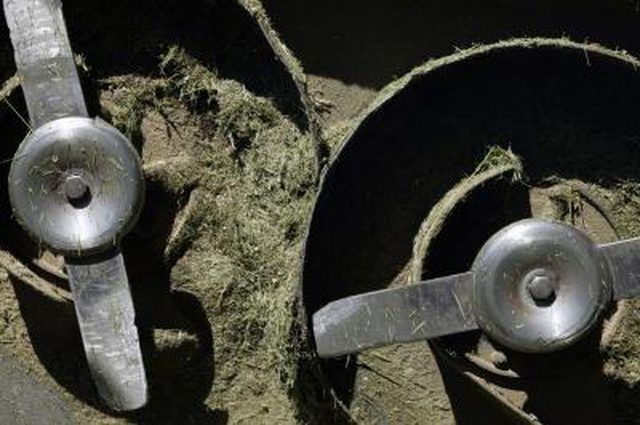Bulbs
Flower Basics
Flower Beds & Specialty Gardens
Flower Garden
Garden Furniture
Garden Gnomes
Garden Seeds
Garden Sheds
Garden Statues
Garden Tools & Supplies
Gardening Basics
Green & Organic
Groundcovers & Vines
Growing Annuals
Growing Basil
Growing Beans
Growing Berries
Growing Blueberries
Growing Cactus
Growing Corn
Growing Cotton
Growing Edibles
Growing Flowers
Growing Garlic
Growing Grapes
Growing Grass
Growing Herbs
Growing Jasmine
Growing Mint
Growing Mushrooms
Orchids
Growing Peanuts
Growing Perennials
Growing Plants
Growing Rosemary
Growing Roses
Growing Strawberries
Growing Sunflowers
Growing Thyme
Growing Tomatoes
Growing Tulips
Growing Vegetables
Herb Basics
Herb Garden
Indoor Growing
Landscaping Basics
Landscaping Patios
Landscaping Plants
Landscaping Shrubs
Landscaping Trees
Landscaping Walks & Pathways
Lawn Basics
Lawn Maintenance
Lawn Mowers
Lawn Ornaments
Lawn Planting
Lawn Tools
Outdoor Growing
Overall Landscape Planning
Pests, Weeds & Problems
Plant Basics
Rock Garden
Rose Garden
Shrubs
Soil
Specialty Gardens
Trees
Vegetable Garden
Yard Maintenance
DIY Bush Hog
DIY Bush Hog. A bush hog is a farm and garden implement used to cut brush and heavy grasses. These are both walk-behind and tractor-towed machines that can cut saplings up to several inches in diameter. Bush hogs are often dual- or triple-deck assemblies, but smaller ones are comprised of only a single spinning blade. Commercial bush hogs are...

A bush hog is a farm and garden implement used to cut brush and heavy grasses. These are both walk-behind and tractor-towed machines that can cut saplings up to several inches in diameter. Bush hogs are often dual- or triple-deck assemblies, but smaller ones are comprised of only a single spinning blade. Commercial bush hogs are high-performance machines, but they can be pricey. For beginners in the area of clearing heavy brush, making a bush hog by converting a heavy lawn mower is often the ideal solution.
Things You'll Need
Tape measure
5-hp lawn mower
Wrenches
Socket set
Straightedge
Permanent marker
Acetylene torch and tanks
Heavy steel file
Steel vise
Hammer
Select a 5-hp heavy lawn mower as the candidate of conversion. Drain the oil and gas from the mower, and leave the cap off the gas tank for 30 minutes. Flip the mower over and measure the vertical distance between the upper surface of the cutting blade and the underside of the mower's cowling or cover.
Use a wrench or socket set to remove the blade from the mower.
Place the mower on concrete or another work surface that can handle torch use in its vicinity.
Use a straightedge and marker to draw a straight line across the front of the mower's upper surface. Make it 3 inches in front of of the blade spindle and parallel to the axles. Draw a pair of lines perpendicular to that line, 2 inches from the front wheel connections on the mower, extending forward from the horizontal line.
Use a pencil-flame nozzle on the acetylene torch to cut along the three lines, and remove a front quadrant of the cowling of the mower. Use a heavy file to clean up and smooth the edges.
Set the blade in a steel vise and measure and mark a point midway between the center of the hole in the blade and the blade tip. Mark the same spot on the other end of the blade. Use a torch to heat the midpoint of the blade to a steel-work temperature, recognized by its cherry red color. Use a heavy hammer to pound an angle that effectively lifts the outside half of the blade about 1 inch from its previous vertical position when mounted in the mower.
Mount the blade on the mower and check its blade height in relation to the cowling or cover. The vertical measurement of the distance between the top of the blade edge and the cowling should be the same on both ends of the blade. If necessary, reheat and adjust the cant in the blade.
Refill the fuel and oil tanks on the mower and start it. Check for excessive vibration. If it vibrates badly, stop the mower, remove the blade and hold it level to determine the source of the vibration. Reheat and alter the blade as necessary.
Remove the handlebar from the mower and set it up to be towed behind a tractor. This is optional, and varies by both the make and model of the mower, and the tractor's towing hitch. Most mowers have a two-part handle that can be disconnected and welded to an assembly that connects to the tractor. If not, use a torch and cut the mower handle level with the tractor hitch, and weld a yoke or a standard hitch to it.
Tips & Warnings
For saplings over 1 inch in diameter, cut a custom blade from 3/8-inch steel bar stock.
Use caution when working with power tools.
Do not walk directly near the front of the bush hog while it is running.